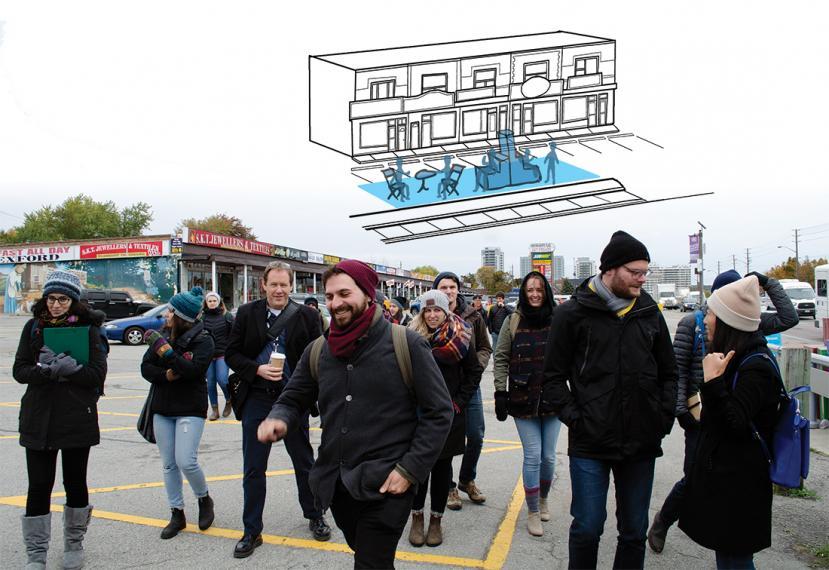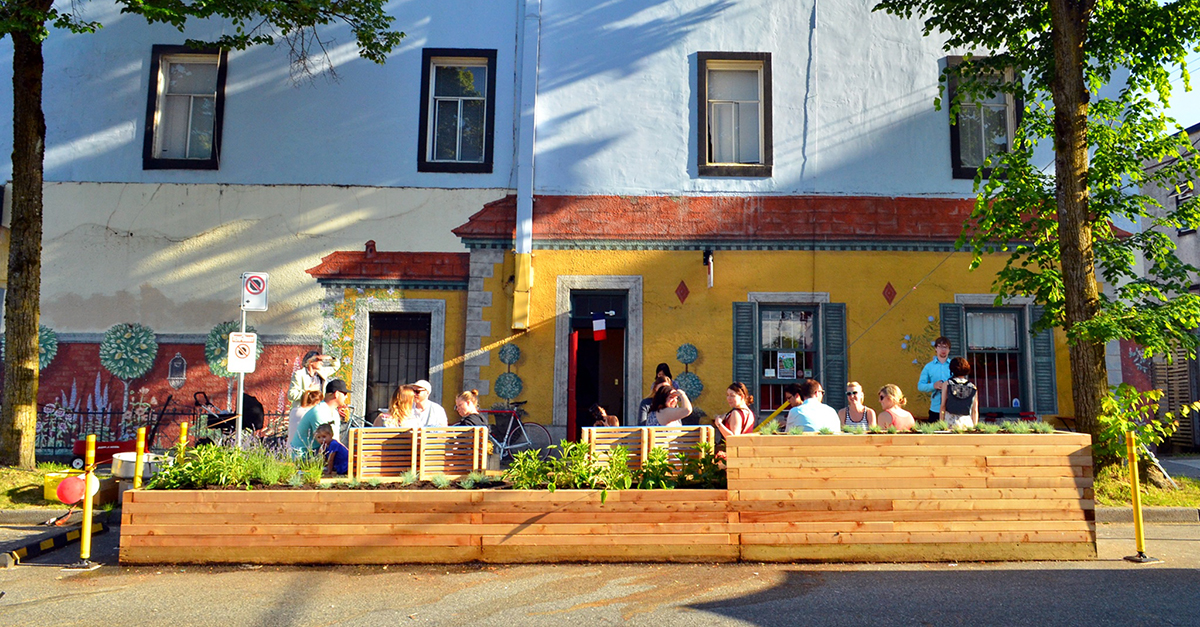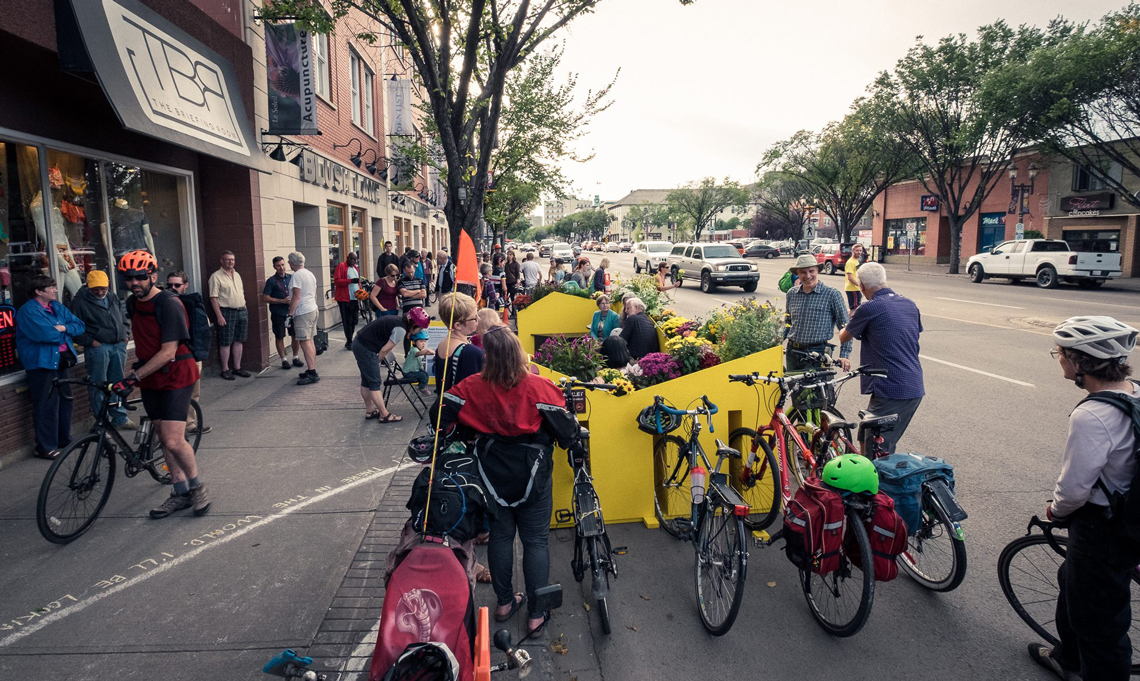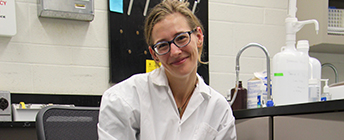Making your community POP!

Did you know you could transform your local strip mall parking lot into a radiant community space? Or convert a side walk into an urban garden?
Introducing… the pop-up parklet.
Landscape architects are using colourful and creative ways to reclaim communities’ under-utilised urban spaces to transform them into community hubs. Large cities like Toronto need to rethink their suburban arterials to create high quality community spaces for their growing populations. Pop-up parklets are an inexpensive, easy and fun solution to this problem.
The original parklet concept was introduced to San Francisco in 2010 and was comprised of a green carpet, potted tree, bench and some traffic cones – a simple way to improve the pedestrian environment.
The trend has since been introduced into cities around the world.
For some, pop-ups create a space to advocate and educate on an important subject and for others it might just be a go-to spot to enjoy their city.
Profs. Brendan Stewart and Karen Landman are working alongside landscape architecture alumnus Daniel Rotsztain and current landscape architecture students to create simple, yet impactful, "pop up" public gathering spaces. They’ve coined their project “plazaPOPS”, part of Park People's Public Space Incubator funded by Ken and Eti Greenberg and the Balsam Foundation.
The goal of these plazaPOPS is to use movable furniture, integrated public art and community programming to transform the underutilized private parking lots in Toronto's suburban strip malls into buzzing public plazas. Look for plazaPops on Lawrence Avenue East this summer.
Or, advocate for a pop-up in your community! We asked Bachelor of Landscape Architecture alumni for tips!
How to make your community Pop: A Q&A
Jonathan Behnke (JB) is a Landscape & Urban Designer at Lanarc, SITES AP in Nanaimo, BC. He is a 2015 Bachehlor of Landscape Architecture graduate. During his second year, he designed a parklet in honour of his friend Isaak Kornelsen who tragically died just months before. The Isaak Kornelsen Memorial Parklet commemorate Isaak’s life, and provokes thought on how to redesign streets in Edmonton to be safe for all users.
Kathleen Corey (KC) is a Public Space Design Engineer with the City of Vancouver. Her MLA thesis included a design-build case study of the French Quarter parklet while at PWL Partnership and supported by the Landscape Architecture Canada Foundation. In her role with the City of Vancouver she creates parklets, “pavement-to-plaza” projects and curbside patios. She is a part of the VIVA Vancouver program that explores new approaches to increasing public space across the city.
Daniel Rotsztain (DR) is a recent graduate of the Master of Landscape Architecture program. His thesis focused on enhancing local strip mall landscapes for pedestrians, which was the basis of the “plazaPOPS” project. He’s actively involved in the project, along with being an artist, writer, cartographer. More about Daniel here.

Why are parklets and pop-up spaces important?
JB: Parklets and pop-up spaces enable people to advocate for important issues and share new ideas in interactive ways with small budgets. Pop-up spaces are effective at raising awareness due to their ephemeral nature--they pop up out of nowhere, and grab attention by interrupting the daily routines of people walking, driving, and cycling. Pop-up spaces can be low-cost to implement since they are temporary and do not have to be as durable as permanent outdoor public spaces.
KC: Streets make up the majority of the public realm; however, most streets don't provide much-needed opportunities for seating, people-watching, outdoor eating, and other passive use. Adopting a tactical urbanism approach of targeted, quick-implementation not only fosters creative solutions, it helps create more spaces that strengthen the dialogue between the community and designer.
DR: Toronto's inner suburbs were built in the 1950s and 1960s to accommodate the car. But these days, there more and more people who don't have cars and walk or take transit instead. So, the suburbs have to catch up with how they are being used! Also, the retail life of Toronto's strip malls is so vibrant, and home to so many new immigrant community businesses. It's important to recognize how important these retail strips are, and figure out ways to support them, rather than thinking the only way to improve them is to demolish them and start anew since the new buildings that replace strip malls tend to have rents that are too expensive for the existing businesses. Finally, there is so much land in Toronto that is used as if it were public, but is actually privately owned. plazaPOPS is trying to figure out ways to activate these kinds of neglected spaces.
What advice do you have for community members looking to create or advocate for pop-up spaces?
JB: The first step is to come up with an idea for a pop-up space: is there a particular issue you would like to bring attention to, or something missing in your neighbourhood that you would like to provide? You will also have to decide on how long you want your space to last; this will affect the budget you will need. The next step is to get permission from your municipality. This can be intimidating because every municipality has different procedures for approving pop-up spaces--some may not have any procedures at all. Talking to the elected councillor in the area of the project is a good place to start. They can direct you to the correct contact within the municipal administration. Look through the local planning documents like neighbourhood plans and complete street strategies, and find the goals and objectives that your pop-up space will be achieving. If your idea is in line with the adopted local plans, the politicians and municipality should be supportive.
KC: Start with an idea on how to include the public whether it’s through a special event or workshop, refine your concepts, and then present your community proposal to your municipality.
DR: Find collaborators! There are so many community groups, residents associations, public health organizations, or business associations that would make a great partner to make a pop up gathering space happen! You can get more done if the entire community is on board from inception to installation.
Do you have any tips or resources on how to turn concepts into reality?
JB: If you need help transforming your idea into a design that can be built, there are often landscape architecture, architecture, or planning students looking for exciting projects to be involved in during their breaks between school terms. Or if you have budget available, hire a professional.
KC: The parklet, pavement-to-plazas, and curbside patio programs we’ve created for the City of Vancouver are all adaptable to other cities/municipalities. They are designed to be modular and adaptable to their surroundings, supporting high foot and bicycle traffic generated by shopping streets. We have also developed modular platforms for parklets and curbside patios to improve installation, drainage, and maintenance.
DR: I produced a guide based on my thesis research that shows how a resident can initiate landscape enhancements for pedestrians at their local strip mall.
How long to pop-ups last?
JB: The Isaak Kornelsen Memorial Parklet I created is a small urban park set up for one day each year in two metered parking spaces on Whyte Ave in Edmonton, Alberta. My long-term goal is to have it set up for an entire week or even a few months each year.
DR: Depending on the design, the pop up can last one day, one week, one season, or morph into something that is permanent! The pop up approach is a great way to test designs, experiment with configurations and show people what's possible without committing to an expensive and permanent infrastructure installation.
KC: Parklets, on average, last for five years with the opportunity for renewal and upgrades to extend longevity.

How much do pop-ups cost? How are they funded?
JB: The cost of parklets vary greatly depending on the design and whether the construction labour is paid or volunteer. Finding money to implement a pop-up space can be a challenge. Look for grants, consider crowd-funding, or partner with a like-minded business located near your proposed location. Scale your design to match the budget you have. The Isaak Kornelsen Memorial Parklet is a painted wood frame structure built by volunteers. It cost $2,400 in the first year including materials, municipal permits, and transportation costs. I reuse the structure each year so my annual cost varies from $300-$500 including permits, maintenance, and transportation.
KC: Each parklet often involves multiple partnerships and in-kind contributions. As a result, the cost can vary significantly.
DR: Each project will be different in terms of cost and time, but we recommend taking the "tactical urbanism" approach, which uses inexpensive materials like asphalt paintings, patio furniture, and upcycled materials to create colourful installations without the barriers of high costs.
These interviews have been shortened and condensed.
A condensed version of this article was originally published in the LIBRANNI 2019 / Vol. 1
 |
Learn more about OAC research:One giant leap for plant scientists
|
 |
Learn more about OAC research:Straight from the horse's stomach |